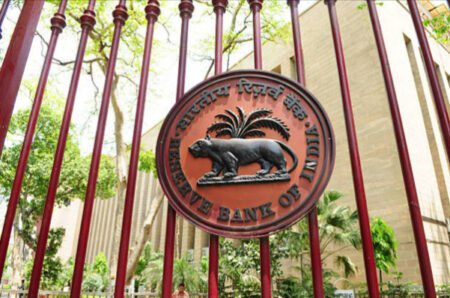RBI governor, Shaktikant Das confirms the decision of Reserve Bank of India to raise the Repo Rate by 40bps and the Cash Reserve Ratio by 50bps for the first time in the last 4 years.
Yesterday, RBI governor, Shaktikant Das held a Press conference to inform about the increase in Repo Rate. The Reserve Bank of India has decided to increase the Repo Rate by 40bps halting it at 4.40% from earlier 4%. Further, The Cash Reserve Ratio is increased by 50bps which makes it 4.50% from earlier 4%.
The surprise notice, officially issued by the RBI governor comes nearly after 4 years. The decision followed the meeting between the monetary policy committee and the central board from 2-4 May. The decision befalls amidst the increasing global crisis due to Russia-Ukraine War. The hike is aimed at controlling the increasing inflation crisis because of the global turbulence. Shaktikant Das stated, “As several storms hit together, our actions today are important steps to steady the ship.”
However, according to the April 2022 policy review, RBI confirmed to maintain the repo rate, but during the ongoing crisis the situation has just worsened and not improved. This has resulted in a sudden increase in the Consumer Price Index (CPI). According to the April 2022 policy statement, the CPI inflation is alarming at 6.95% in March 2022. Further, it is expected to increase in April.
What is Repo Rate, CRR and how will it affect us?

The Repo Rate is the interest rate at which the Central Bank of India provides short-term loans to the commercial banks. When the RBI decides to increase the Repo Rate, the commercial banks also increase the rate of interest at which they provide loans to common man. By increasing the Repo Rate, the RBI keeps a check on the inflation and can control it. Increasing Repo Rate results in reduction in money supply in the economy, and thus eventually controls inflation.
Whereas CRR or Cash Reserve Ratio is an RBI’s monetary policy where, commercial banks have to deposit a certain amount of liquid cash with RBI. The deposition of CRR with RBI eliminates the liquidity risk and regulate money supply in the economy. If the RBI, decides to increase the CRR, the commercial banks will in turn increase the rate of interest. Eventually, the ease of getting loans decreases and the banks will charge higher EMIs.
The sudden hike in the Repo Rate and CRR will eventually affect us. The current hike will not just affect the commercial banks. The rise in Repo Rate and CRR will in turn increase the rate of interest at which the commercial banks provide loans to us. Thus, the EMIs or Equated Monthly Instalments on any commodity will increase. Further, the interest to repay loans to the banks will also increase.
It is further expected that the cost of living will witness a hike. This is due to the increase in EMIs for home loans. This will affect the real estate business and shortly there will be a rise in prices of properties. Further, auto loans and personal loans will also witness a rise in rate of interest. Shortly, the commercial banks and NBFCs or Non-Banking Financial Companies will also increase their rate of interest.
RBI Governor, Shaktikant Das announced the hike in Repo Rate
The RBI governor, Shaktikant Das, during his announcement informed that the increase should be seen as a part of the announcement of last month regarding gradual withdrawal of money from the market. The governor also mentioned the increasing geo-political tensions, high crude oil prices, and shortage of commodities globally, which affected the economy.
Published by: Diwakar Kumar
Edited by: Aaradhana Singh












